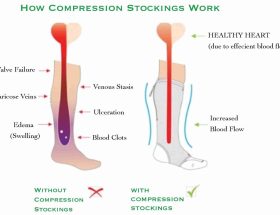When it comes to achieving successful weight loss, setting SMART goals is essential. SMART stands for Specific, Measurable, Achievable, Relevant, and Time-bound. By following this framework, you can create realistic and attainable targets that will keep you motivated throughout your weight loss journey.
Specific
The first step in setting SMART goals is to make them specific. Instead of setting a general goal like “lose weight,” make it more specific by stating how much weight you want to lose. For example, you can set a goal to lose 10 pounds.
Being specific helps to provide clarity and focus, ensuring that you have a clear target to work towards. It allows you to create a plan and take the necessary steps towards achieving your goal.
Measurable
Next, your goals should be measurable. This means that you need to find a way to track your progress and measure your success. In the case of weight loss, you can measure your progress by regularly weighing yourself or measuring your waist circumference.
When you can see tangible results and track your progress, it helps to keep you motivated and accountable. Measuring your progress allows you to make adjustments as needed and celebrate small victories along the way.
Achievable
Your goals should also be achievable. Setting unrealistic goals can lead to frustration and disappointment. Assess your current lifestyle, capabilities, and resources to ensure that your goals are within reach.
While it’s great to have big aspirations, it’s important to break them down into smaller, more attainable goals. For example, if your overall goal is to lose 50 pounds, start by setting a smaller goal of losing 5 pounds in the first month. This way, you can gradually work your way towards your ultimate objective.
Relevant
For your goals to be effective, they should be relevant to your weight loss journey. Consider why you want to lose weight, whether it’s for health reasons, increased self-confidence, or improving your overall well-being.
By setting goals that align with your personal motivations, you are more likely to stay committed and focused. Additionally, relevant goals help you prioritize your efforts and make meaningful progress towards your desired outcomes.
Time-bound
Lastly, your goals should be time-bound. Set a specific timeframe for achieving your goal to create a sense of urgency and prevent procrastination. For instance, you can aim to lose 10 pounds in three months.
Breaking down your goals into smaller, time-bound targets can help you stay on track and maintain your motivation. It provides a sense of structure and allows you to evaluate your progress regularly.
In Conclusion
Setting SMART goals for weight loss success is a powerful tool that can greatly increase your chances of achieving your desired outcome. By making your goals specific, measurable, achievable, relevant, and time-bound, you create a roadmap that guides you towards success.
Remember to track your progress, celebrate milestones, and adjust your goals as needed. Stay focused, remain committed, and you’ll be well on your way to achieving your weight loss goals.







